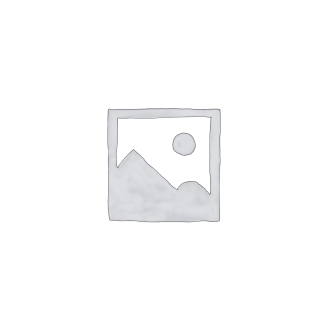MIZAULD, Antoine [with] DIOCLES CARYSTUS [and] MIZAULD
UNIQUE MEDICAL SAMMELBAND, MSS. NOTES ON WINE
Memorabilium, utiliu[m], ac jucundorum centuriae novem. (With) Artificiosa methodus comparandorum hortensium fructuum … quae corpus cleme[n]ter purgent. (And) Alexikepus, seu auxiliaris et medicus hortus. (and) Hortorum Secreta, cultus, et auxilia. (and) [DIOCLES CARYSTUS] De morborum praesagiis. (and) [MIZAULD] Opusculum de sena.
Paris, Apud Federicum Morellum Typographum Regium, 1584. 1575. 1575. 1575. 1572. 1572.£2,950.00
8vo. ll. (xvi) 132; (viii) 39; (xii) 107 (v); (viii) 132; (iv) 27 (i); 18 (vi). 6 vols in 1, 3 FIRST EDITIONS. First work italic, else Roman letter. T-ps with woodcut printer’s devices. Woodcut initials, head- and tailpieces, typographical headpieces. C17 engraved armorial bookplates to front and rear pastedowns by Sarret (dates unknown), at front partially obscured by c1800 bookseller’s label (‘Guy, Lyon’), partially obscuring C18 inscriptions recording the weather and other events in France, to front and rear pastedowns and first bookplate. C18 autograph to t-p, ‘Ex libris Vaucluse (Vancluse?),’ early shelfmark and price notes to pastedowns. First and second works with light intermittent waterstain to outer margin. Occasional single worm hole from a7 of third work, mostly marginal but affecting the odd side note, light age yellowing. Very good, clean copies in the original vellum, split headband.
Exceptional sammelband of medical and botanical works by the prolific French astronomer and physician Antoine Mizauld (1510-78), with charming evidence of French provincial provenance. The second, fifth and sixth works are first editions.
The first work, the ‘Nine Centuries,’ is an entertaining and eccentric collection of nine hundred medical and natural-historical marvels, many taken from classical sources, with a useful index listing every entry. Women’s medicine features strongly, including several sensational and harrowing stories of abnormal births. Other old wives’ tales include a test for virginity, which makes a ‘corrupted’ woman urinate uncontrollably, and advice on how to make a wife confess her infidelities to her husband while asleep, by placing the tongue of a frog, duck or owl on her heart. There is plentiful material on the powers of precious gems and stones, as well as healing waters, and herbal and botanical draughts.
Half of the second work is dedicated to wines made from a wide variety of plants, and describes their use as purgatives, with material derived from Cato the Elder, Dioscorides and the medieval author Arnoldus de Villa Nova. This treatise, otherwise dedicated to botanical cures as well as the medical effects of meat, is followed by the Alexikepus, another discursive work on gardening and the medical uses of botanical products. A third botanical work, the Hortorum Secreta, contains advice on growing plants, including giant gourds over nine feet long, as well as their medicinal qualities, with a great deal of information on the care of trees. There is a separate section at the end on grafting trees, including useful and instructive Latin verses.
Diocles of Carystus, born in the fourth century BC, was an ancient Greek physician. Mizauld translates his ‘Golden Letters’ on diagnostic signs into Latin (these originally appeared in the 1565 ed. of the Alexikepus before being removed), appending them with a brief note of ancient origin on the usefulness of vomiting as a purgative. Also included are Arnaldo de Villa Nova’s letters to the King of Aragon about the medical uses of botany. The final work is on Sena, a laxative herb, with information from Arabic and Greek sources, and including a section on the effects of wine mixed with this herb.
The notes to the pastedowns and bookplates concern the extremely cold weather between 1765 and 1767, apparently in Provence, noting that the unusually cold summer of 1765 affected orange trees. The autumn and winter of the following years damaged pear and quince trees and vines, the author noting that the harvest had to be abandoned, and that in January and February 1767 the cold was ‘rigorously felt,’ with a recorded temperature of 11 degrees (presumably Fahrenheit). In 1768 the author notes that across France the late frost of April 18 destroyed the grape harvest, except in Provence and the Languedoc. However, in 1771 and 1772 the author describes abundant harvests across France, with wines of superior quality in the latter.
None in Heirs of Hippocrates, Osler or Simon. I: NLM 3188. USTC 170725. This ed. not in Wellcome, Pritzel or Bitting. II: Oberlé 686. Not in Wellcome or Pritzel. NLM 3191. USTC 170251. III: This ed. not in NLM, Wellcome, Dumoulin or Pritzel. USTC 170249. IV: Not in Wellcome or Pritzel. NLM 3196. USTC 170273. V: Dumoulin 200. NLM 1129. Wellcome 1762. USTC 170074. VI: Dumoulin 203. Not in Wellcome. Pritzel 6985. NLM 3192. USTC 170112.

